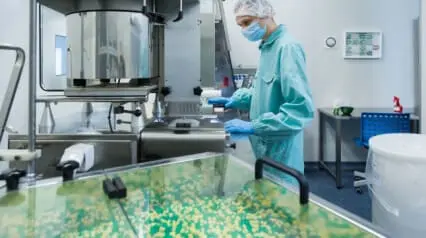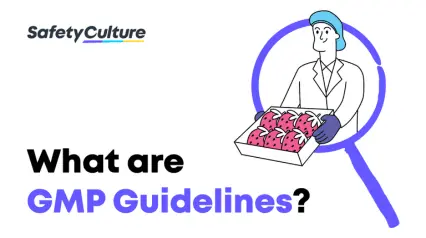What are Good Manufacturing Practices (GMPs) Regulations?
GMP regulations are guidelines to ensure that pharmaceutical, biotech, and medical device products are safe, effective, and high-quality. These regulations are enforced by regulatory bodies such as the FDA and EMA.
The main goal of GMPs, meaning Good Manufacturing Practices, is to establish a manufacturing process that minimizes the risk of contamination, errors, and other quality issues. It includes proper documentation, quality control, personnel training, equipment maintenance, and facility design.
GMPs are constantly evolving and adapting to new technologies and industry standards. Companies must stay up-to-date with the latest regulations and guidelines to maintain compliance and ensure product quality.
History
GMPs were introduced in response to potential risks associated with pharmaceutical products. In the US, incidents of poisoning and harmful medicines occurred, prompting the enactment of the Federal Food and Drugs Act in 1906, which aimed to regulate defective drugs and foods, focusing on pharmaceutical indications.
Then in 1968, the World Health Organization (WHO) approved the initial draft text on GMP. And in 1969, the World Health Assembly incorporated the WHO GMP into the WHO Certification Scheme to ensure the quality of pharmaceutical products in the global market. The guidelines were expanded from 1989 until 1990. And today, more than 100 countries have incorporated the WHO GMP guide into their national medicine laws
These guidelines are continuously updated to reflect new technologies and best practices.
Different GMP Regulations Worldwide
GMP regulations vary from country to country, with each nation having its standards and guidelines. Below are a few examples of GMP regulations in different countries:
Food and Drug Administration (FDA)
In the United States, the FDA ensures the safety and efficacy of drugs, medical devices, and food products. In addition to raw materials, equipment, facilities, personnel, and quality control, they cover all aspects of the manufacturing process.
European Medicines Agency (EMA)
EMA regulates and approves medicines for human and animal health in the European Union (EU) and the European Economic Area (EEA), implementing strict guidelines to ensure the safety and effectiveness of all medicines available in Europe.
Pharmaceuticals and Medical Devices Agency (PMDA)
The PMDA oversees medical products’ quality, effectiveness, and safety throughout Japan’s development and post-market phases. They aim to provide healthcare professionals and citizens with timely access to safe and effective medical products and promote their safe usage.
Therapeutic Goods Administration (TGA)
TGA is the regulatory authority responsible for therapeutic goods such as medicines, medical devices, and diagnostic tests in Australia. The TGA operates under the Australian Government Department of Health.
Health Canada
Health Canada is responsible for helping Canadians maintain and improve their health. Health Canada’s GMP guidelines are based on the International Conference on Harmonization (ICH) guidelines and ensure that products are safe, effective, and high-quality.
National Medical Products Administration (NMPA)
They were previously known as China Food and Drug Administration (CFDA). This agency regulates and supervises food, drug, cosmetics, and medical device safety in China. They also do post-market inspection, risk management, and licensed pharmacist registration.
Central Drug Standard Control Organization (CDSCO)
CDSCO is India’s national pharmaceutical and medical device regulatory authority. It approves new drugs and clinical trials and implements GMP regulations.
Their mission is “to safeguard and enhance the public health by assuring the safety, efficacy, and quality of drugs, cosmetics, and medical devices.”
Core Principles of GMP Regulations
The GMP regulations outline core principles to guarantee pharmaceutical products’ safety, effectiveness, and quality. Below are some of these principles.
Quality Management Systems (QMS)
QMS ensures that products are consistently produced and controlled according to quality standards. These systems include processes for document control, change control, corrective and preventive actions, and training programs.
Personnel Qualifications, Training, and Hygiene
All personnel involved in the manufacturing process should be qualified for their respective roles and responsibilities and trained to perform their tasks in a manner that ensures product quality and safety.
In addition, personnel should adhere to strict hygiene practices to prevent product contamination. It includes proper hand washing, wearing appropriate clothing and protective gear, and avoiding contact with the product unless necessary.
Training employees regularly and providing refresher courses is essential so they stay current with GMP regulations and industry standards. It helps to maintain a culture of quality and compliance within the organization.
Facilities and Equipment Design, Maintenance, and Validation
Maintaining facilities and equipment ensures they are in good working order and prevent cross-contamination. It includes regular cleaning, calibration, and inspection to identify potential product quality issues.
Validation entails thoroughly testing and confirming that the equipment and facilities can consistently produce products that meet the necessary quality standards. It involves assessing various factors such as temperature, humidity, and air quality to ensure that the manufacturing environment is conducive to optimal product quality.
Production and Process Controls
These controls ensure that the manufacturing process is consistent and reliable and always yields high-quality products. It includes procedures for handling raw materials, equipment calibration, cleanliness, and sanitation. These procedures prevent contamination and ensure a safe and effective final product.
Documentation, Record-keeping, and Data Integrity
Traceability and accountability require accurate and thorough documentation of all aspects of the manufacturing process. It includes everything from raw material sourcing and testing to equipment calibration and maintenance.
Maintaining all data and records’ accuracy, completeness, and reliability involves ensuring accurate data entry, proper record-keeping, and documentation and approval of any modifications or corrections.
Quality Control and Assurance
GMP regulations require companies to have robust quality control and assurance systems, including testing procedures, documentation, and record-keeping procedures.
A quality control procedure involves testing and analyzing materials (raw, in-process, and finished) to determine whether they meet predetermined specifications.
On the other hand, quality assurance involves implementing processes and systems to ensure that products meet quality standards consistently.
Handling Complaints, Deviations, and Product Recalls
Companies must have a system to promptly investigate and address any complaints or deviations from established procedures. If a product recall is necessary, the company must have a plan to quickly and effectively remove the affected products from the market and notify customers and regulatory agencies.
It’s essential for companies to properly document and track all complaints, deviations, and product recalls to ensure compliance with GMP regulations and to identify any patterns or trends that may require corrective action.
GMP Requirements
Now that we know about the different GMP regulations, what about the specific GMP requirements that businesses have to implement? To give you a better understanding, we’ve provided a couple of GMP examples that are applied in various industries:
- Provide adequate ventilation, lighting, and cleanliness in production areas
- Implement regular maintenance, calibration, and validation of equipment used in production
- Limit access to production areas to authorized personnel only
- Document investigations, deviations, and corrective actions taken during production
- Do a final product testing for identity, potency, purity, and safety




